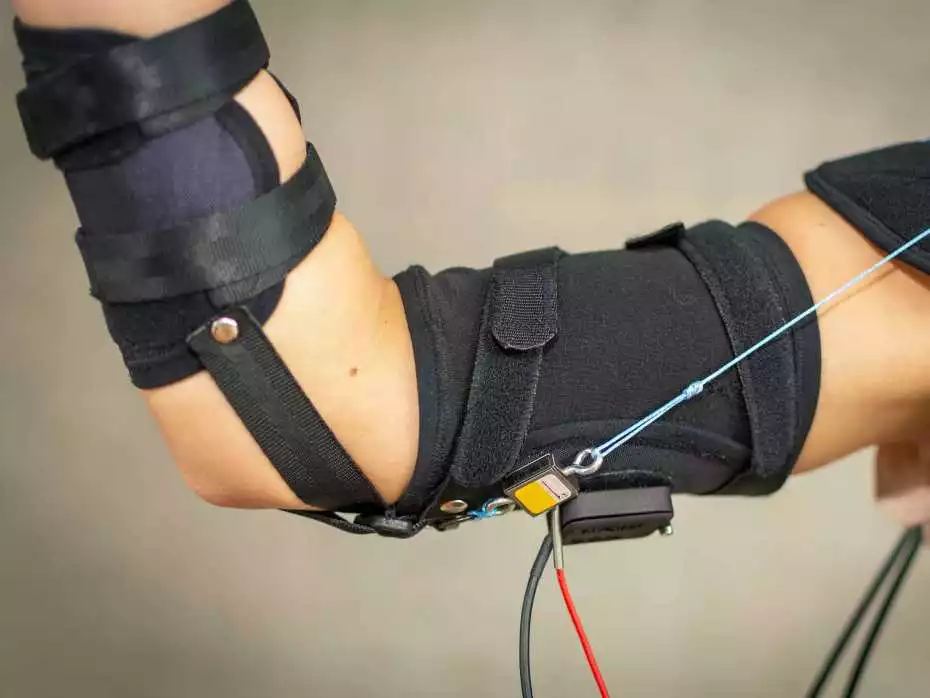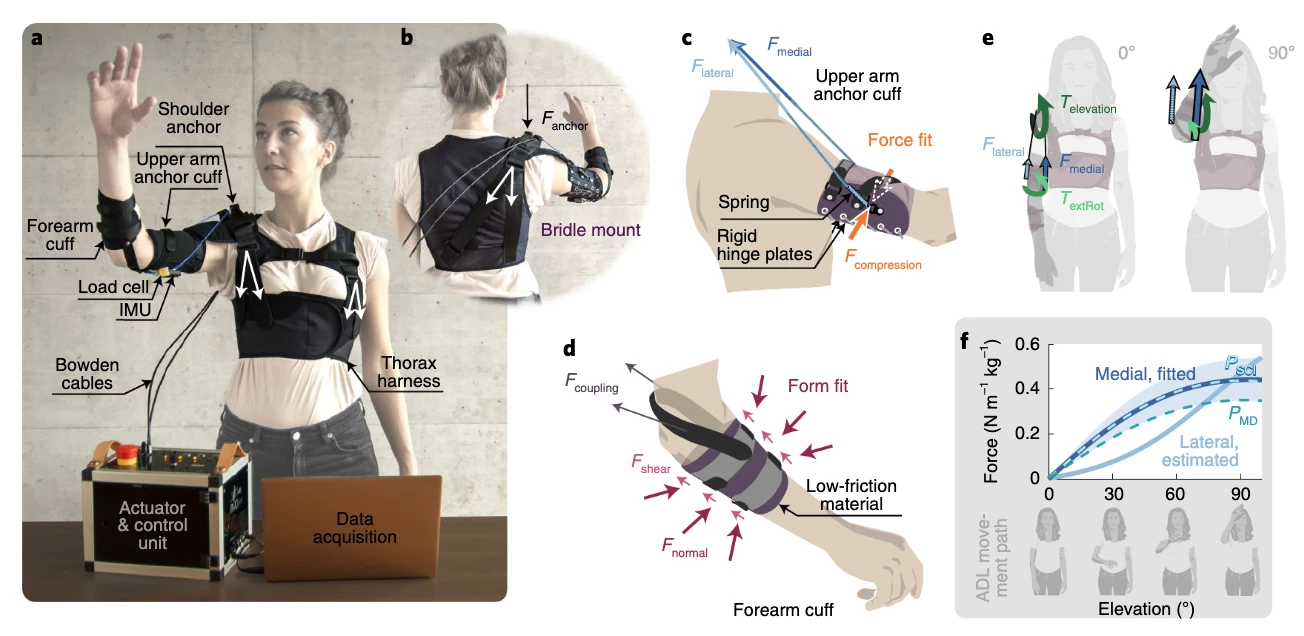Researchers at ETH Zurich have developed a lightweight, wearable textile exomuscle that uses sensors embedded in its fabric to detect a user's movement intentions and chip in extra force as needed. Initial tests show a significant boost in endurance.
Where powered exoskeletons act as both muscle and bone, providing force as well as structural support, exomuscles make use of the body's own structure and simply chip in with additional force. As a result, they're much lighter and less bulky, but they're also limited in how much force they can deliver, since human bones and joints can only take so much.
This "Myoshirt" from ETH Zurich is designed as a vest, with cuffs for the upper arm and forearm. Sensors in the fabric feed data on muscle control impulses to a control box, which processes the information in real time and decides when to actuate the artificial muscles – which are short Dyneema cables aligned parallel with the wearer's own muscles. By shortening the cables as the muscles contract, the Myoshirt is able to contribute power to your movements in a subtle, discreet, intuitive and tuneable way.

The ETH team developed the Myoshirt particularly to enhance the strength and endurance of people with restricted or declining mobility, and ran a small test, placing the unit on 10 people without any physical impairments, one with muscular dystrophy, and one with a spinal cord injury.
In an endurance test, which required people to lift their arms and/or an object and hold them up, healthy subjects were able to hold the position for a third longer with the exomuscle active than without it. The results were even better for the other two; the MD patient saw an endurance boost around 60 percent, and the patient with a spinal cord injury saw an endurance leap of 300 percent.
Before it's ready to become a commercial product, the team says it needs to be further miniaturized and streamlined to fit better under clothing, and preferably with a drop in weight – the control box and actuator motor setup currently weigh a combined 4 kg (8.8 lb) and sit on a box on a table rather than being attached to the suit. As such, it's currently only really suitable for folk getting around in wheelchairs.

For the time being, the team is focusing on a single muscle motion: enhancing the activity of the shoulder muscles when users lift their arms, although as a concept it could clearly work with a number of other muscle groups. Indeed, the team is working with MyoSwiss AG, an ETH Zurich spinoff making Myosuit exoskeletons that are currently specifically designed to help with leg strength.
The research is open access in the journal Nature Machine Intelligence, and you can see the device in action in the video below.
Source: ETH Zurich








